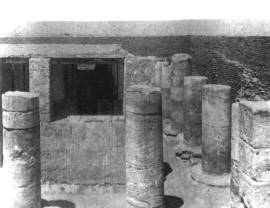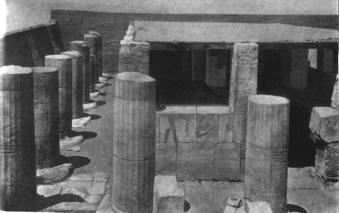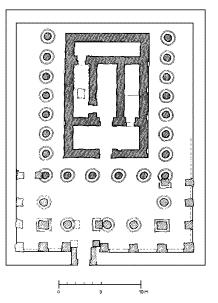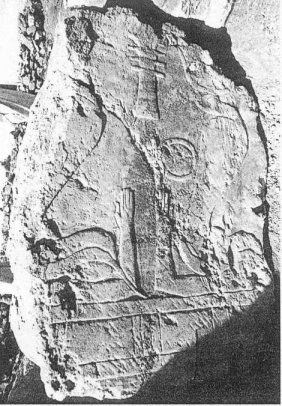|
Other Monuments and Fragments of Hatshepsut |
last update: 16.04.2011 |
| Apart from the impressive buildings Hatshepsut had raised
by at Deir el-Bahari and at Thebes she ordered to raise or repair
buildings at numerous other places. Most likely, some work was already
started by her father, Thutmosis I, and continued by her. Especially,
sanctuaries and holy relics were restored or renewed in the religious centers of the country.
This page gives for the time being a short outline of its further construction measures. |
| Abydos
Hatshepsut gave the order to restore the temple of Osiris. |
| Armant
(Hermonthis) Activities of Hatshepsut at the temple of Month are testified by a foundation deposit which was unearthed in front of the pylon which was erected by Thutmosis III. |
| Assuan
During the excavations of the German Archaeological Institute, Section Cairo, at the temple of Khnum several blocks were discovered in the foundation of the Ptolemaic temple which testify a building activity of Hatshepsut and, perhaps, her predecessors Thutmosis I and II. |
| Hermopolis At Hermopolis a new temple was raised for Thot. |
|
Karnak At the eastern side of the district of Amun, where her first pair of obelisks had been erected, she built a small shrine aligned to the raising sun. |
|
Karnak
- Temple of Ptah During restoration work done be the CFEETK two sandstone blocks were discovered 2009 in the foundation which show nearly the complete titles of Hatshepsut (one block shows the throne- and the birth-name, the other one shows the Horus-name). The well preserved blocks decorated in sunken relief probably belong to a temple dedicated to the god Ptah which had been erected during the reign of Hatshepsut. Other sandstone blocks of comparable size used in the foundation may also derive from such a temple - presumably the blocks had been arranged so that their decorated side is not visible. |
| Kom Ombos The temple of Kom Ombos was extended by a new gate. |
| Men-nefer
In the old residence Men-nefer a temple dedicated to Ptah was restored or possibly extended. |
| Nubien Several temples were built in Nubia (in Semna-West, Buhen, Dakka, Qasr Ibrim). At Buhen at the 2nd cataract a temple dedicated to Horus was erected by Hatshepsut. With the building of the high-dam at Aswan the remainders of that temple were cleared away and re-erected at Karthum/Sudan (all photos were kindly made available of K. Adams). |
 |
 |
|
| Buhen, temple of Horus, built by Hatshepsut | Buhen, temple of Horus, built by Hatshepsut |
 |
|
Temple of Horus at Buhen, |
| Fragments During investigations of the construction of the temple of Merenptah (Bickel, "Tore und andere wiederverwendete Bauteile Amenophis III"; 1997) several fragments of a building of Hatshepsut were discovered among reused parts. Totally, 6 limestone fragments with raised relief were found and 4 fragments without inscriptions. |

| The fragment above (photo from Bickel, loc. cit., plate
52a, block 94) shows a part of frieze which is aligned
to the left. On the lower part one detects the raised arms of two Ka-signs in
between a raising Uraeus - crowned by the horns of a cow and sun disk on the head.
In front of the right Uraeus a Sn-ring (Gardiner character: V9) is still
detectable.
This combination is a cryptographic writing of the throne name of Hatshepsut, "Maat-ka-Ra". Thus, the frieze is assigned to Hatshepsut. In the center above the arms of both Ka-signs a djed-pillar is shown (after Bickel, 1997) |
| All the blocks found so far seem to have been part of the same building. However, there is no information to which building of Hatshepsut they could have belonged. Possibly, to a bark shrine, which had been erected along the causeway from Djeser djeseru to the Valley Temple which was located border of the green lands, or to the Valley Temple itself which was build with limestone blocks, or even to Djeser djeseru. |